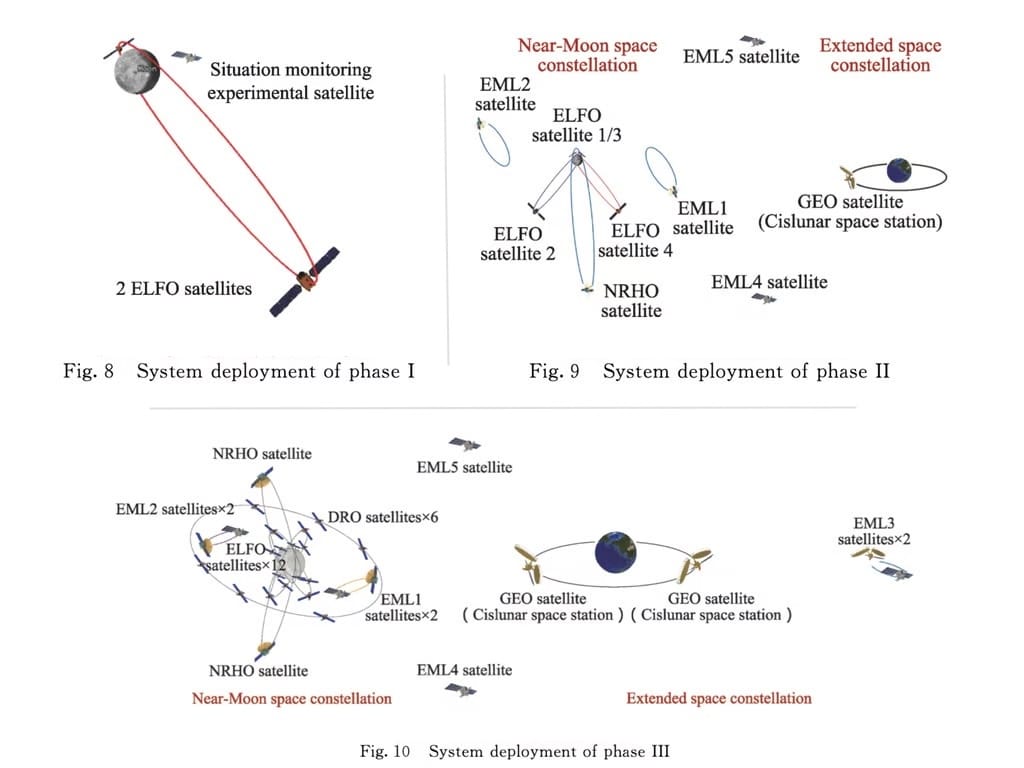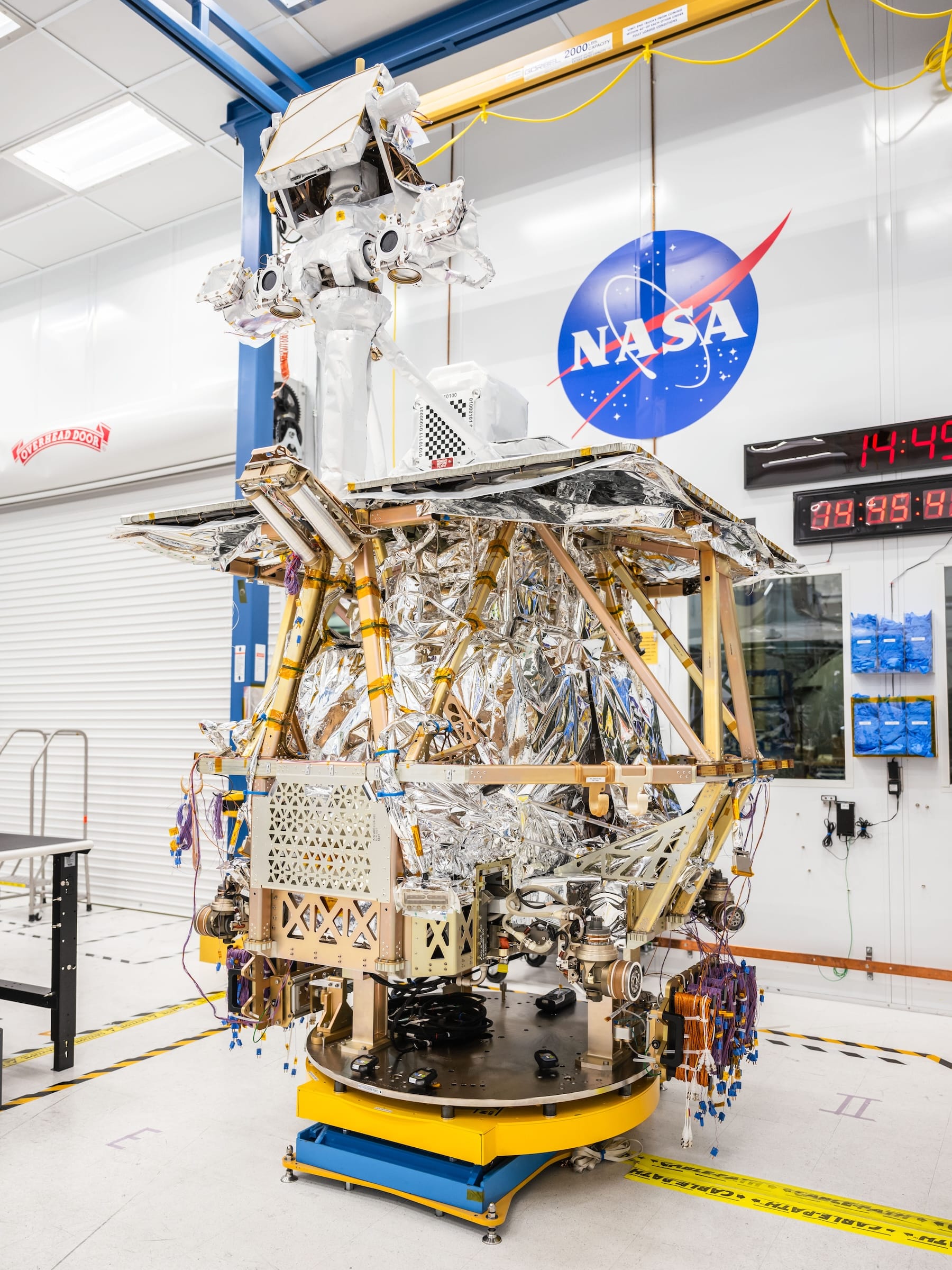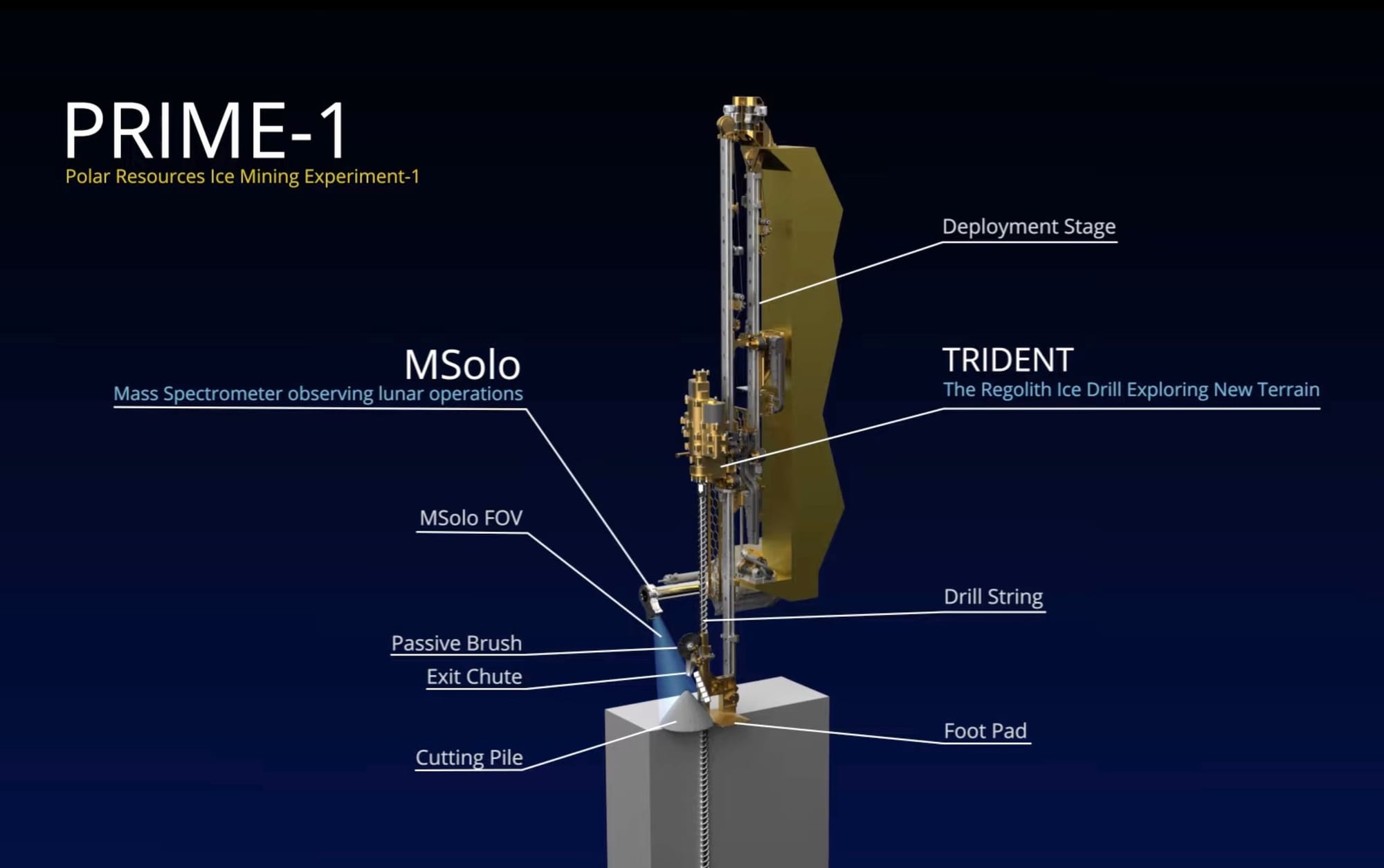Moon Monday #185: China’s lunar constellation plans, mission updates, and more
China’s ambition to build a lunar navcom constellation
Ling Xin reports on China’s ongoing studies to have a phased constellation of 30+ satellites which would provide high-precision navigation as well as high-bandwidth communications for most places on the Moon with up to quadruple coverage. Earlier studies focused on a navcom constellation that optimizes for the lunar south pole. The overall intent is to support China’s ambitious crewed lunar surface missions driving towards a full-fledged Moonbase. A part of making this work would include China developing capabilities to monitor and track spacecraft across cislunar space—the space enveloping Earth and the Moon. This is similar to what the US is planning starting with the launch of Advanced Space’s Oracle spacecraft later this decade to monitor cislunar traffic.

Since 2018, China has already deployed two communications relay orbiters, Queqiao 1 and Queqiao 2, in service of the Chang’e 4 and Chang’e 6 missions respectively on the Moon’s farside. Queqiao 2 will also relay communications for China’s upcoming Chang’e 7 and Chang’e 8 lunar landers, which CNSA is targeting to launch in 2026 and 2028 respectively. Also, the Queqiao 2 launch carried two experimental Tiandu CubeSats, which entered lunar orbit too. In all, the Queqiao 2 mission is testing and verifying technologies which will feed into China’s upcoming full-fledged navcom constellation.
Why build a navcom constellation around the Moon?
For one, such a system can enable cost-effective Moon missions since spacecraft would no longer need hefty communications hardware and rented ground infrastructure. Partner nations with smaller space budgets can take advantage of this to send their own lunar missions at lower costs, including to the less explored farside lunar surface.
A navcom constellation can especially aid crew and hardware on the Moon’s poles, where Earth’s visibility is limited due to it being lower on the horizon than it was during the near-equatorial NASA Apollo missions. A navcom constellation will also aid lunar-water-hunting future rovers to better venture inside permanently shadowed regions, where Earth visibility worsens further. Moreover, a lunar navcom can provide a common time reference for the Moon, which would help swarms of lunar spacecraft operate safely, and also aid lunar-based fundamental physics and astronomy experiments including farside radio astronomy.

Other than China, ESA also aims to have a navcom lunar constellation with its Moonlight initiative. The launch of UK’s Lunar Pathfinder orbiter in 2026 will constitute ESA’s first Moonlight element. ESA will be Moonlight’s anchor customer but expects European companies to actively commercially provide lunar navcom services to missions globally. On the US side, last we heard, Lockheed Martin’s subsidiary Crescent Space was targeting a 2025 launch for its first two navcom lunar orbiters. More potential competitors in the lunar navcom space include ArkEdge Space, Aquarian Space, and Plus Ultra. But only China has launched hardware yet.
In a recent paper published in the Chinese Journal of Space Science, researchers proposed that China should integrate their Queqiao lunar satellites with the existing Earthbound Tianlian ones, which notably serve, among other things, China’s Tiangong space station. As Andrew Jones highlighted, the proposal’s driving rationale is to substantially improve surface coverage time and area for China’s upcoming ambitious crewed lunar missions leading to a full-fledged Moonbase. It would also allow redundancy if and when China faces ground station availability issues from its Moonbase partners across the globe.
Chinese researchers have also suggested that when coupled with Earth-based ground stations, China’s navcom network can help CNSA track deep space missions with sub-kilometer accuracy all the way to Jupiter and even beyond. In fact, Queqiao 2 will try testing an element of this during the Chang’e 7 mission currently targeting a 2026 launch. As noted by Chi Wang, et al. in a December 2023 paper on the scientific objectives of the Chang’e 7 mission, the LOVEX payload onboard the Queqiao 2 satellite will perform a deep space craft tracking experiment:
The LOVEX on the relay satellite is used [sic] to construct a 400 000-km baseline Moon–Earth VLBI measurement and observation experiment system to improve the accuracy of orbit determination in deep space and to carry out astrometry and astrophysics observation and study.
Let’s talk VIPER?

NASA announced on July 17 that it intends to cancel the VIPER rover mission that was supposed to fly on Astrobotic’s Griffin lander mid-decade. The agency cited continually rising costs and more launch delays, and the risk of overstepping into budgets meant for other missions in the CLPS program, as the cumulative reasons for the decision. NASA says it will consider expressions of interest from the US industry as well as international partners to fly VIPER at no cost to NASA before going ahead and disassembling the rover next year. The US Congress will decide if NASA will need to reconsider flying VIPER somehow or if the agency can go ahead with the formal cancellation it desires. In any case, Astrobotic will still attempt to land Griffin on the Moon’s south pole for NASA under their existing CLPS contract but with a simulated mass replacing VIPER.
Despite how NASA may put it, no other CLPS mission can perform the depth and breadth of science VIPER was supposed to. The advanced rover intended to explore areas in and around permanently shadowed regions for over four months to help scientists determine the nature, accessibility, and abundance of lunar water ice deposits. In comparison, most CLPS missions last a single lunar day (14 Earth days) and are minimally mobile at best. Results from VIPER were to feed into NASA’s planning of crewed Artemis missions but it would seem the first batch of such astronauts will have to meet some of VIPER’s goals themselves. The only missions that actually hit the kind of broad as well as specific goals VIPER had are CNSA’s Chang’e 7 and the JAXA-ISRO LUPEX rover.
I want to cover what really happened to VIPER beyond what is already said and propagated, and everything that it affects going ahead. If you’d like to speak to me about the VIPER mission and its consequences, please reach out:
Many thanks to The Orbital Index and Gordon Roesler for sponsoring this week’s Moon Monday. If you love this curated community resource too, join them and support independent writing and journalism.
Intuitive Machines gears up for second Moon mission
For Intuitive Machines’ second Moon landing mission targeting launch between November 2024 and January 2025 as part of NASA’s CLPS program, the two organizations have finalized the Nova-C spacecraft’s landing target to be a 200-meter diameter elliptical region on a rocky ridge on the Moon’s south pole which connects the Shackleton and de Gerlache craters. Neither Intuitive Machines nor NASA have specified the particular location or its coordinates but it’s an interesting development in any case because the mission’s landing site has now moved from 85°S to around 89°S. The latter presents better chances of finding water ice within 1 meter below the surface—the maximum extent of the Honeybee-Robotics-provided TRIDENT drill. The lander will analyze the excavated material for water ice and other such volatiles using the MSolo mass spectrometer, a first such study.

In the meanwhile, Intuitive Machines completed hot-firing its in-house developed VR900 methalox engine for the mission, which improves lander performance over their first CLPS landing IM-1. Jeff Foust previously reported that Intuitive Machines is refining several systems on its Nova-C lander with the hope of bagging full success this time around instead of the partial one that was IM-1—which NASA and Intuitive disappointingly skewed the success criteria of and continues to at various space events when talking about the mission.
More Moon
NASA is progressing slowly on the mid-decade launch of the Artemis II mission by an SLS rocket, which will push four astronauts in an Orion capsule around the Moon and back. With a successful test of the water deluge system, which will suppress the intense sounds of the launch, NASA is now about halfway through preparing ground systems for the crewed rocket’s second liftoff off Earth. In the meanwhile, the core stage of SLS for the mission is on its way to the Kennedy Space Center from Michoud for final rocket assembly followed by its integration with Orion. Jeff Foust reports how the assembly process for SLS is now cleaner due to lessons from assembling the large rocket for Artemis I.

Andrew Parsonson reports that ESA plans the first launch of their large lunar lander called Argonaut to be in 2031 onboard an Ariane 64 rocket. Argonaut will be built by Thales Alenia or Airbus, and will be capable of deploying up to 2100 kilograms of payload mass on the Moon. With a planned launch cadence of 2 years starting 2031, ESA hopes for Argonaut to support NASA’s Artemis crewed missions with cargo supplies, large rover deliveries, and habitat-related infrastructure such as lunar oxygen extraction and solar power supply.
